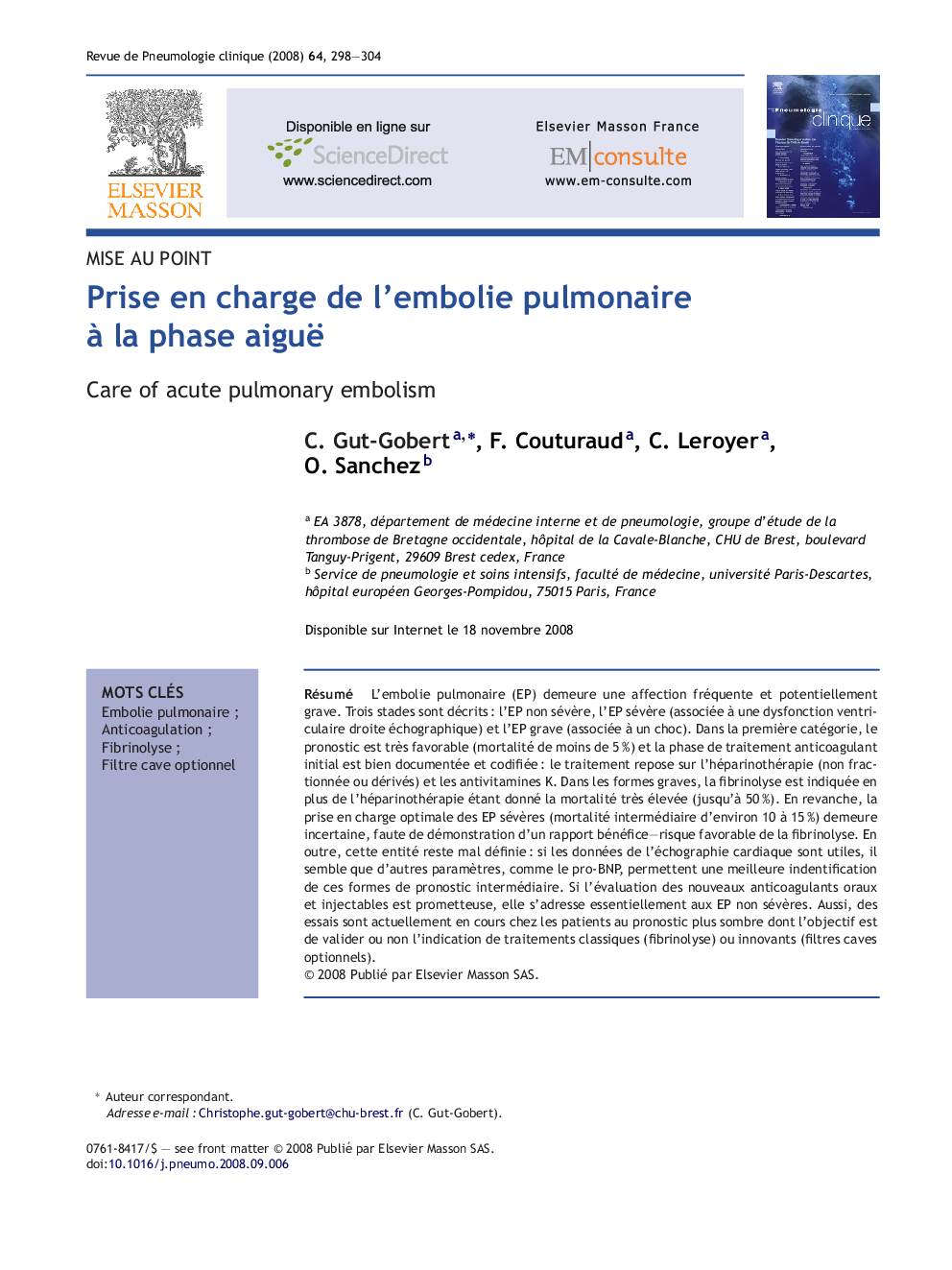| Article ID | Journal | Published Year | Pages | File Type |
|---|---|---|---|---|
| 3419967 | Revue de Pneumologie Clinique | 2008 | 7 Pages |
Abstract
Pulmonary embolism (PE) is common and potentially serious. Three stages are described: mild PE, moderate PE (associated with an ultrasound right ventricular dysfunction) and severe PE (associated with a shock). In the first category, the prognosis is highly favourable (mortality under 5%) and the initial phase of anticoagulant treatment is well documented and codified: the treatment is based on heparin therapy (non fractionated or derivatives) and oral anticoagulants. In the severe forms, fibrinolysis is indicated in addition to the heparin therapy, given the very high mortality (up to 50%). However, the optimum care of moderate PE (intermediate mortality between 10 and 15%) remains uncertain, due to the inability to demonstrate a benefits-risk ratio in favour of fibrinolysis. In addition, this entity is still poorly defined. Although cardiac ultrasound data is useful, other parameters, such as pro-BNP, provide a better identification of these forms of intermediate prognosis. Although the evaluation of the new oral and injectable anticoagulants is promising, it mainly concerns mild PE. In addition, trials are currently under way in patients with a gloomier prognosis. The purpose is to validate or invalidate the indication of classic treatments (fibrinolysis) or new treatments (optional caval filters).
Related Topics
Health Sciences
Medicine and Dentistry
Infectious Diseases
Authors
C. Gut-Gobert, F. Couturaud, C. Leroyer, O. Sanchez,
